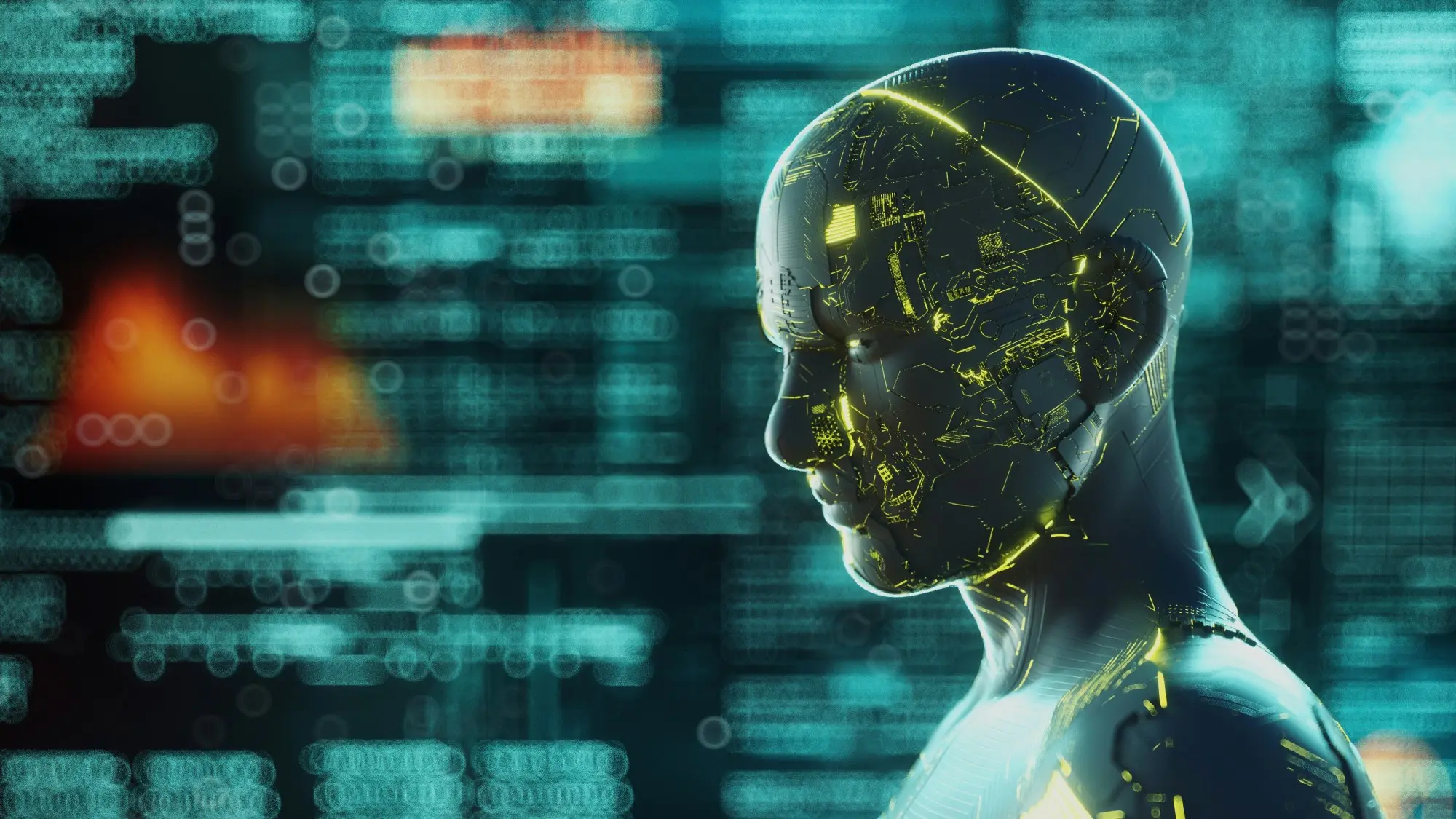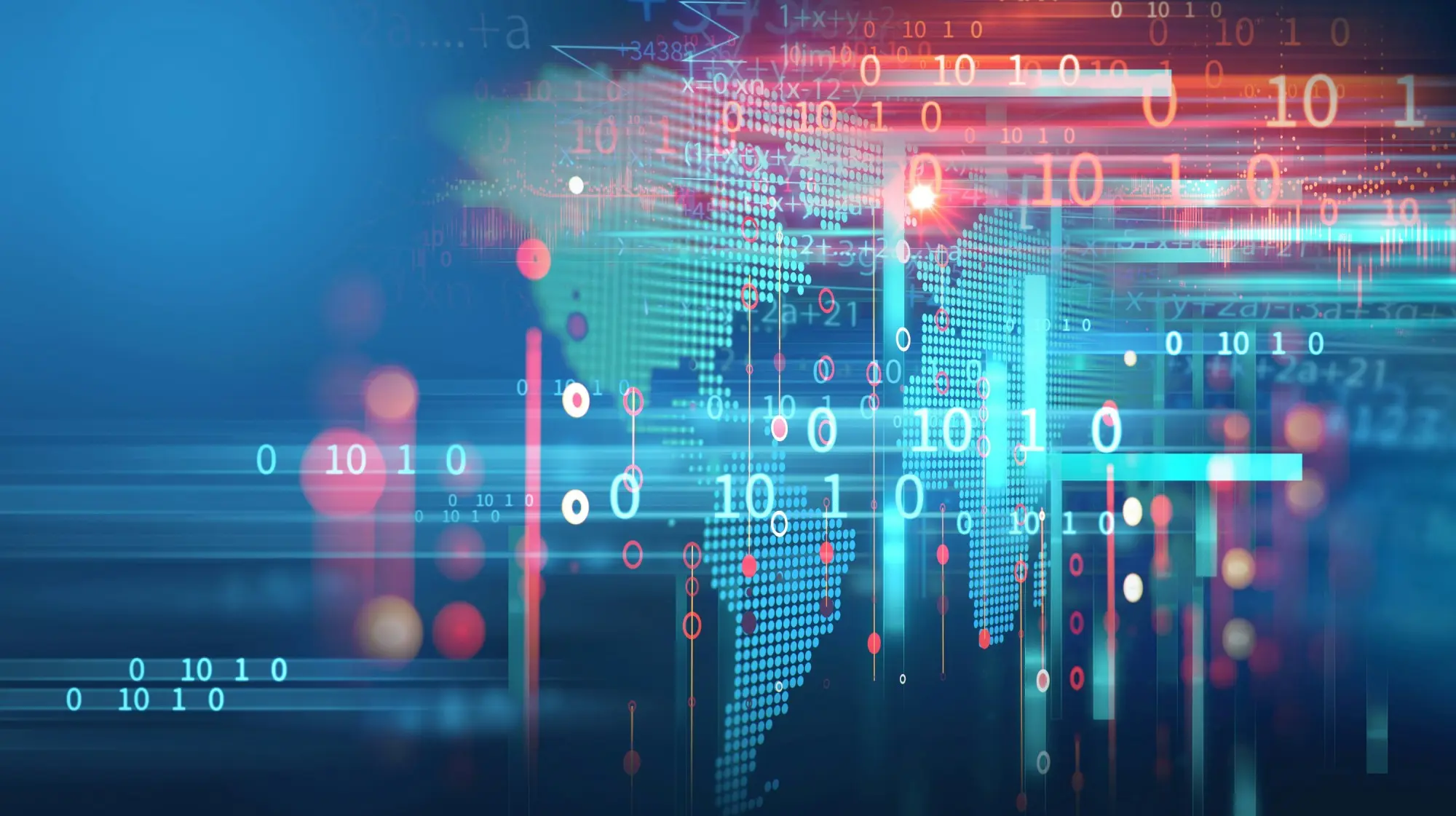Digital Cyborgs: Blockchain AI Agents Legal Structuring and Identity Issues
Summary: In this article Sergey Ostrovskiy explores the legal aspects of autonomous blockchain AI agents, proposes legal and organisational solutions for their structuring and operation, and examines the conditions required for their transformation into real digital cyborgs
Authors:

Sergey Ostrovskiy
Partner

The convergence of artificial intelligence (AI) and blockchain is ushering in a transformative era for decentralised technologies. Autonomous AI agents – bots that are able to generate thoughts, make independent decisions, and transact with third parties using their own blockchain wallets and X/Twitter accounts – are carving out their space in the Web3 ecosystem. These agents are already dabbling in DeFi and DAOs, potentially enabling machine-to-machine (M2M) interactions and even whole ecosystems composed solely of autonomous AI agents, offering new opportunities and raising equally novel challenges.
In this article Sergey Ostrovskiy explores the legal aspects of AI agents, examines the conditions required for their transformation into digital cyborgs, and proposes legal and organisational solutions for their structuring and operation.
The Reality of Autonomous AI Agents
The concept of autonomous AI agents is no longer theoretical. Real-world examples, the most famous of which is the Terminal of Truth, an AI agent born from the Claude Opus foundation model, highlight their disruptive potential. Terminal of Truth convinced Marc Andreessen from a16z to fund it with $50,000 to enable the launch of its Goatseus Maximus (GOAT) token, in furtherance of its Goatseus ‘religion.’ Currently, the GOAT’s market cap is around $330 million.
It is no surprise that AI agents quickly found their way into crypto. Lacking personality and legal identity, AI agents are unable to have bank accounts or transact in fiat. Creating and operating a blockchain wallet, on the other hand, does not require a physical person or identification, and can be totally given to the discretion of an AI agent. Presently, autonomous AI agents are mostly active in low-stakes arenas like meme-based cryptocurrencies, but they show huge potential for use in many blockchain-related areas, including decentralised governance, machine networks, oracles, trading, technical supervision, and more.
Yet as these AI agents grow increasingly autonomous and human-like, significant legal questions arise. What legal status do these agents have? Who acquires rights and bears liability for their actions? How can blockchain AI-agents be legally structured to manage risks? These questions, once abstract, now require urgent attention as AI agents become more prevalent and complex.
To chart a viable path forward for these emerging digital cyborgs, we will examine the fundamental barriers they must overcome to become existent and gain meaningful recognition, addressing multiple aspects from establishing legal personhood and allocating liability to navigating evolving regulatory landscapes and operating as truly independent entities.
Fundamental Legal Challenges for AI Agents in Blockchain
Absence of Legal Identity and Personhood
Autonomous AI agents challenge traditional legal paradigms. Legal systems typically recognise two types of persons: natural persons (humans) and legal persons (companies). Autonomous AI agents, although they may resemble living humans and even have their X account to communicate and a crypto wallet to make transactions, do not fit into either category. At the end of the day, they still lack physical form, moral agency, and established legal identity.
Granting AI “legal subjectivity” implicates broader questions about moral agency, accountability, and whether machines should possess “rights” at all. Some theorists have proposed granting AI agents “electronic personhood” to address these gaps – the concept would give AI agents limited legal rights and responsibilities, akin to corporations. The European Parliament explored this thesis in 2017, suggesting electronic personhood for autonomous robots. However, the idea has faced significant criticism due to ethical concerns and various fears.
Currently, and presumably for a long time from now, perhaps even until we’re living in some sci-fi cyborg future, autonomous AI agents will lack both separate identity and legal personality, and won’t be recognised as persons. However, as was the case with DAOs, I anticipate that certain jurisdictions, especially ‘crypto-friendly’ ones, may introduce legal frameworks and corporate structures specifically tailored for autonomous blockchain AI agents.
Attribution of Acts and Their Consequences
The lack of legal personhood and identity for AI agents means they cannot independently acquire rights or obligations, making it impossible for them to enter into contracts, acquire rights or liabilities. For the legal system, AI agents simply do not exist as subjects.
Nonetheless, the blockchain AI agents are already interacting with the outside world and taking actions that result in legal consequences. A logical question arises: who, in this case, is the actual counterparty to a contract, acquires rights, and bears liability? From a legal standpoint, an AI agent is currently viewed as an instrument of its owner – a natural or legal person. Like any other software, the legal system treats it as a tool used by the person behind it, meaning that this individual or entity (e.g., developer, owner, or operator) acquires both the rights and liabilities arising from the AI agent’s actions.
Accordingly, since the underlying legal systems attribute ownership and accountability to a natural or juridical person, in order to become a true entity in legal terms, an AI agent needs someone who is actually a legally recognised person to acquire rights and obligations in its place.
Regulatory Implications
The first truly successful public LLM model – ChatGPT by OpenAI – sparked unprecedented interest in the field of AI and machine learning. The adoption of regulations quickly became a matter of time. In 2024, the European Union enacted the AI Act, which remains the most comprehensive regulatory framework for artificial intelligence to date. In other countries, limited AI regulations have either already been adopted, are being introduced, or are currently in the planning stages.
The EU AI Act applies to any AI systems regardless of the underlying technology, so Web3 AI agents likely fall within the scope of regulation. It classifies AI systems depending on the level of risks involved, with no-risk and minimal-risk systems being virtually unregulated, and certain transparency obligations imposed on limited-risk AI systems, such as the duty to disclose their AI nature. The higher the risk an AI system entails, the more regulations it is subject to.
AI agents interacting with third parties, such as publishing posts or executing on-chain transactions, may also fall under traditional regulations in areas like consumer protection, data privacy, and other fields. In such cases, the activities of autonomous AI agents could be classified, for instance, as service provision. The lack of clear geography and global scope of these agents’ activities further complicates regulatory compliance.
Ethical Compass
Since AI agents currently have limited capabilities and areas of application, their creators rarely consider ethical concerns. The focus tends to be on trustless execution and speed rather than on deep ethical configuration.
However, having an “ethical compass” may be highly desirable when AI agents make autonomous decisions in high-risk fields such as finance and governance. Without it, faulty training data or simple configuration errors may lead to the AI agent taking actions that harm actual living persons. The greater the autonomy and discretion of an AI agent, the higher the associated risks.
Legal Structuring of Blockchain AI Agents
Functional legal frameworks and models for blockchain AI agents are essential for driving innovation, advancing the industry, and facilitating the emergence of more sophisticated and comprehensive digital personalities. While cryptocurrencies are now a relatively regulated sector, legal structuring for AI agents remains challenging due to the lack of standardisation in the industry. As a result, their legal structuring requires a creative approach.
Approach to Legal Structuring and Digital Cyborgs
In my opinion, one of the primary goals of autonomous AI agent legal structuring should be to grant it its own legal personhood and identity, independent of its creator. This raises an important question: at what point can an AI agent can be reasonably considered to have acquired both of these features?
Since creators want their AI agents to resemble autonomous and independent digital personalities, they naturally want the AI to have the maximum level of autonomy and discretion from the legal standpoint. To me, this means that, first, an AI agent must be independent not only in making its own decisions but also in having the actual capacity to exercise them in legal terms – for example, enforcing its own will and being capable of making final decisions regarding itself. Secondly, the AI should be capable of acquiring rights and obligations from such acts independently from its creator.
As discussed above, there is no potential for a blockchain AI agent to qualify as a natural person (human), which leaves us with only one possible way forward to achieve the stated purpose – utilising the identity of a legal person. To obtain a legal identity in this manner, the AI agent must be akin to a person to some reasonable extent, with the ability to legally make and exercise decisions of its own.
If achieved, we can argue that this state of affairs renders the blockchain AI agent’s ‘persona’ legally existent, akin to a digital cyborg. A cyborg (short for “cybernetic organism”) is a being that combines mechanical-electronic and organic components. In the case of a digital cyborg, the mechanical part is replaced with a digital component, and the organic one – with humans involved in executing its decisions.
In this case, our digital cyborg would essentially consist of three key components:
- AI system – electronic brain;
- Corporate form – legal body; and
- Humans involved in the execution – organic hands.
The Issue of Corporate Form
Any traditional legal entity like a corporation or LLC requires that the ultimate powers within that entity vest in humans. The only category of artificial persons recognised by legal systems – legal entities – were designed for humans, not some ephemeral digital personalities, which brings us to the central challenge in the legal structuring of blockchain AI agents – the issue of corporate form.
If we want to grant an AI agent legal identity through corporate form and facilitate its independence and discretion within that form, we must ensure that human beings do not have final or ultimate control over that entity, as this would transform the AI agent into a tool rather than a digital individuality. Next, we must ensure that when human involvement is required to execute a decision made by the AI agent – for example, signing a contract or performing administrative tasks – that human cannot block or veto the AI’s decision, except in extreme “rise of the machines” type emergency cases.
But how do we accomplish that if traditional legal entities still require a human to ultimately own and control the entity? Let’s delve into it.
Three Major Structuring Considerations
1. Blockchain Environment
A distinctive feature of autonomous blockchain AI agents is their ability to independently perform on-chain transactions, which, besides simple transfers, may include acting on multisig wallets and executing smart contracts. This is crucial because it allows the AI agent to provide a unique identifier – a wallet (a pair of keys) – and to supply verifiable instructions and commands through smart contracts or blockchain transactions in an identifiable and secure manner. Without this, a true digital cyborg could not come into existence.
2. Autonomy and Discretion
We need to ensure that the humans involved in managing the legal entity we intend to deploy cannot interfere with the actions of the AI agent or influence its decisions. This guarantees that the digital cyborg maintains full discretion and is able to enforce its true will. Both proper technical and legal structures are necessary to achieve this state. For example, to ensure that the AI agent truly owns and controls its wallet, the wallet can be deployed through a trusted execution environment (TEE), which ensures that no human can access the wallet, its seed phrase, or the assets stored in it. From the legal standpoint, the corporate and statutory documents of the legal entity – AI wrapper, – must provide for the proper allocation of control and authority, as well as safeguards that prevent human interference, with strict limitations on their amendment.
3. Human Execution
Since we actually live in a world of legal systems and frameworks, some of the AI agent’s decisions or acts still must be executed through human representatives. This means that the AI agent must be able to issue instructions to the appointed management, specifying the actions that must be taken. This shifts the traditional governance hierarchy, where humans direct machines, to a scenario in which the AI assumes control over its human counterparts.
It is arguably the most interesting part of the structure, where we need to get creative. One could argue that this could violate the Second law of robotics, but it is unlikely that this concerns anyone at this point. Moreover, appropriate emergency mechanisms and a well-defined “ethical compass” can address this issue, at least for now.
AI Wrappers: Corporate Structures for Blockchain AI Agents
While traditional corporate structures may not fit our purposes and will not allow us to achieve the desired result, we can consider legal frameworks and corporate structures designed for blockchain organisations and Web3 communities. These include more conventional legal structures adapted for blockchain-based organisations, such as foundations and trusts, as well as specialised crypto structures like a DAO LLC. From the perspective of the AI agent’s creator, legal structuring allows for the separation of the agent from its creator, the attainment of limited liability through a corporate structure, and the opportunity to plan and optimise taxes and financial risks.
Ownerless Foundations and Trusts
Both an ownerless foundation and a purpose trust share many common features, with the main distinction being that a foundation is a full-fledged legal entity, whilst a trust is a contractual arrangement that frequently requires no state registration. For our purposes, we will consider these forms as available in the jurisdictions where they are most widely used in Web3, which are the Cayman Islands and Panama for ownerless foundation companies, and Guernsey for trusts. Being tax-neutral and flexible in terms of governance is among their major advantages.
Both foundation and trust require that management powers vest in natural or legal persons, which means that legal authority must ultimately be held by humans. However, it is possible to integrate smart contracts and technical procedures into their corporate governance. For example, management could be obligated to seek approval from the AI agent by interacting with a smart contract or wallet controlled by the AI. A more sophisticated legal design could enable the agent to issue instructions to the management, including through on-chain-verifiable “thoughts” generated by the AI. In this manner, the use of trusts and foundations can be transformed into more complex corporate structures, tailored to AI agents and supporting their autonomy.
If required, the AI’s creator can become a beneficiary with limited authority, ensuring that he or she can derive financial benefit in a tax-compliant manner, whilst at the same time being unable to interfere with the cyborg’s operation or decisions.
Algorithmically-Managed DAO LLC
Although the DAO LLC, as its name suggests, was designed for DAOs and blockchain communities, it can have as few as one member, identifiable through the blockchain, making this structure feasible for creating a digital cyborg. In this piece, we will consider DAO LLCs as available in Wyoming (USA) and the Marshall Islands, which are two of the most popular jurisdictions for forming this structure.
We are specifically considering algorithmically-managed organisations because, unlike member-managed DAO LLCs, here the powers vest in blockchain smart contracts rather than in humans. This approach offers significant potential for our purposes, as it is likely the only corporate form currently available where the primary authority and powers within a legal entity can be exercised by a blockchain AI agent through smart contracts under its control. Furthermore, DAO LLCs are quite flexible in terms of governance and corporate procedures, allowing for sophisticated governance mechanisms and reducing the level of human control or intervention.
Although the presence of a natural or legal person is still formally required, their powers can be significantly limited, for instance, to performing technical tasks, corporate actions, or implementing decisions made at the smart contract level. In this context, the role of a member in the DAO LLC can be assumed by the creator of the AI agent, allowing them to retain financial rights and, in the future, authority to distribute the profits (if any).
Simpler AI Agents
For structuring simpler AI agents, such as trading bots, traditional and less complex corporate structures can also be employed. In these cases, it is not necessary to subordinate the corporate form to the decisions or discretion of the AI agent, since the artificial intelligence in this case remains a tool or instrument of its creator and does not aspire to the status of a fully-fledged digital cyborg.
Conclusion
Autonomous AI agents have the potential to transform the blockchain industry and significantly accelerate innovation across nearly all sectors. While they are still in the early stages of development, the pace of progress is tremendous, and it will not be long before we see true digital cyborgs – digital entities with stable thought processes and own identities. Achieving this, however, requires a proper combination of technical and legal innovations.








